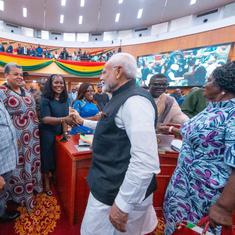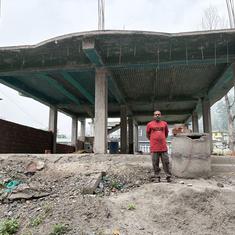Do any of those storylines sound familiar? Think back to two years ago, when Prime Minister Narendra Modi’s coronation within the party was not an inevitable thing. Modi might have been the brightest star in the saffron firmament, but he also had a tainted history thanks to the 2002 Gujarat riots and more than enough competitors within his own party standing in the way.
While the entire story of how Modi managed to wrest control of the leadership in Delhi could fill several books, two chief factors played into it. First, Modi had a proven track record, despite the 2002 riots, of bringing growth and progress to Gujarat, where he would be re-elected to three terms as the chief minister. The other, was that most of the leaders standing in his way, coalescing around Lal Krishna Advani, had already had their shot in the 2009 elections and fallen short.
Crane Bedi
The latter factor holds true for Delhi as well. The capital’s BJP unit has featured a parade of unimpressive leaders over the years, all of whom have had their chance to take control internally and to take on the opposition at the hustings. Last year when, led by current union minister Harsh Vardhan, the BJP finally ended up with the most seats in the Delhi Assembly, it still managed to fall short of a majority and wasn't able to form the government.
On that basis, conditions were ripe for someone like Bedi to come in and shake up the establishment. Bedi is well known to people in the capital for being the country’s first female Indian Police Service officer as well as a prominent face from the anti-corruption movement that rattled the government a few years ago.
It was presumed that the other part of the equation, the track record, was taken care of because of Bedi’s IPS tenure. But while that might have worked for the public at large, it evidently has not been enough to convince the BJP workers. What didn’t help, of course, was that the deal was made at the top-level without bringing the fractious Delhi unit on board. As Aditi Phadnis writes in the Business Standard, “One hour before she joined the BJP and 12 hours before she was named the party's chief ministerial candidate, the Delhi BJP office at Pandit Pant Marg had no idea anything like that was afoot.”
Cashing other people’s cheques
A “good governance” track record was clearly not enough for BJP workers. The installation of Bedi in the party, which BJP president Amit Shah admitted was not part of the original plan, was done by spending capital that Shah and Modi had built up by their stellar record in elections over the last year. But for the party unit, and the larger Sangh Parivar, to fully buy into the idea of Bedi as chief minister, they would have to be convinced that she could be a solid political operator as well.
Modi ruffled plenty of feathers in his ascent to the top of the BJP leadership, but he did by working his way up the ladder steadily, establishing a model in Gujarat and convincing key allies like Rajnath Singh to take his side. Bedi might see herself as a Modi figure for the BJP in Delhi, but her apparently high-handed attitude doesn’t come with a history of electoral or political success to back it.
The party is still behind Bedi, primarily because Modi and Shah have told it to follow suit. But the cracks are more apparent and the timeline is much shorter in comparison than Modi's prime ministerial campaign. Rumours suggest the BJP is already preparing to use Bedi as a scapegoat in case the party doesn't win, and the chief ministerial candidate has herself indicated that she has plans for such a contingency. If what Modi and Shah are trying with Delhi fails, it could have a huge effect on how the rest of the BJP assesses their political capital.










